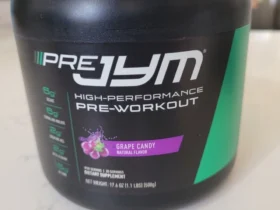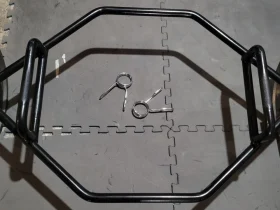Old exercise equipment takes up space and gathers dust. It may be that it no longer suits your needs, or you may be looking to upgrade. If you don’t want your old equipment anymore, but it still works, you’re probably thinking about selling.
Unfortunately, selling second hand exercise equipment isn’t as easy as it may at first seem. Issues with the market, difficulty transporting, and unenthusiastic buyers are making it increasingly harder for sellers. Before you make your listing, you need to know where to advertise and the response to expect.
Our guide is here to show you the best places to sell. We’ve considered the pros and cons of each, so you can make an informed decision. We’ve also included a guide to how to present your used equipment for sale, and the pitfalls to avoid.
Exercise equipment can be sold, it just requires some thought and planning.
What You Should Know About Selling Used Exercise Equipment
Before you start listing your equipment, you need to know what difficulties you may be facing. The reality is that it’s not easy to sell used equipment. Be aware of this going in, so you don’t feel disappointed at not making a quick sale.
What is making it so hard to sell? For a start…
The Marketplace is Flooded
Home gyms are big business, and have been for a while. From those dedicated to fitness, to people who made an impulse purchase. A huge number of homes own some form of exercise equipment. The at-home workout continues to grow in popularity.
On the one hand, this means you have a large audience to sell to. On the other hand, there are large numbers of people selling. Old equipment takes up space, and improvements are always fast coming. Many people are looking to make a quick sale.
Buyers know this, and know they can get a good deal. When selling, you may find yourself up against people who aren’t bothered by profit at all. This is why it’s so important to make your equipment look appealing, and why you need to know where to sell.
The flooded marketplace means…
Retailers Don’t Want It
Many pawn shops and second hand stores don’t accept exercise equipment. Whether they know they can’t sell it, or just don’t have the space. Retailers also know that should they be looking in the future, there’s always options on offer.
Selling your equipment to retail is seen by many as a low effort solution. The only problem is finding a place that will take it.
All of which leads to…
Low Resale Value
With a smaller marketplace, more buying options are crammed in together. You have to fight to be seen, and unfortunately the best way to do this is with a low price. Used exercise equipment will only ever sell for a fraction of the price from new, and this is made harder by the number of people willing to offer reductions.
You may be selling because you’ve outgrown the use of a piece, but you’re up against every seller who simply regrets a purchase. For people who bought an exercise bike on impulse only to use it as a clothes horse, selling is about getting a product out of the house.
None of this is to say you can’t sell your equipment, and sell it well. To have the best chance of getting a good price then there are 5 steps you need to take.

How to Sell Your Equipment
It seems obvious, but the best way to sell your equipment is to make people want to buy your equipment. This means assuring its high quality, and making it look appealing. There are 5 steps to doing this.
1. Make Sure It’s in Good Working Order
Before you start selling, you need to know exactly what it is you’re selling. This means knowing where any issues are.
Fully assemble the equipment and give it a run through. If it has moving pieces, make sure they move smoothly. Local buyers are likely to want to give the equipment a ‘run-through’. When they arrive, everything should be ready for use.
If you still have the owner’s manual, read it through to double-check all the parts are in the right place. If you don’t have the owner’s manual, have a look online. It should be available for download. Print this off and have it ready. When the buyer arrives, you should be able to offer them the manual.
2. Keep It Clean
The fastest way to sell equipment is by making it appealing. Give everything a thorough clean before listing. This includes vacuuming any under parts, disinfecting where it’s been touched, and wiping down from top to bottom.
If it looks good, people are more inclined to think it’s a good buy. They want to know what they’re buying has been cared for.
3. Take a Good Photo
Remember that this is a saturated marketplace. If you want people to buy your equipment over someone else’s you either need to drastically lower the price or make it look worth buying.
Place your equipment in a room with good lighting. This is when all that prior cleaning really pays off. Take photos from multiple different angles, to show all the features. The item should be in focus, central, and well lit. This is what grabs peoples attention. There are so many listings online, you want to do everything you can to stop people from just scrolling past.
Buyers will generally have to make a decision before they can see the item in person. You may not be relying on the pictures to close the sale, but they are the first step in negotiating.
4. Write an Honest, but Positive, Description
Along with the pictures, your description is the other main selling point. The basics to include are the make, the model, and the asking price. Always include the asking price, even if you’re open to negotiation. Many people won’t reach out unless they know what the seller is expecting.
Describe your experience using the equipment. You have first-hand experience, so you can cover all the ways it’s improved your work-out. Be upfront about any issues – cosmetic damage, missing pieces, broken parts. Hopefully, there won’t be much. Be clear about exactly what is for sale.
Share the price you paid, or the price it currently retails for new at. You want the buyer to understand that they’re getting a bargain. Especially if you’re still charging a high price. It should be clear that buying second-hand is a significant discount.
Link to the manufacturers page. You can’t, and shouldn’t, include all the details of the product in your description. The manufacturer will be comprehensive and effusive in their original description. Let this work for you.
Including why it’s for sale is also a good idea. Avoid anything too negative, but if you’re looking for more space, or have a valid reason for changing, then include it. It will reassure the buyer the equipment is high quality.
5. Increase Your Audience
Below we cover the best places to sell your equipment. The more avenues you explore, the more likely you are to make a sale. One advert has a limited reach compared to multiple, in different venues.
The more people who see your listing, the more buyers you attract, and the better price you can sell at.
Remember that not every buyer will be like you. Don’t limit your range by focusing on stereotypes. Rather than just advertising via a local gym, make yourself open to as many types of buyers as possible.

5 Ways to Sell Used Exercise Equipment
Listed below are the 5 best and easiest ways to sell used equipment. Some avenues will yield a greater profit, where others are more likely to lead to a quick sale. It depends on how much time you’re willing to put in.
As mentioned above, the best way to sell is to appeal to as many markets as possible. There are, however, two distinct markets: local and non-local.
Selling local returns the greatest payment. This is because it cuts down on delivery costs. However, it’s also the smallest audience.
Selling non-locally means you’re more likely to find a buyer. However, depending on the weight of your equipment, such as exercise bikes transport can destroy a profit.
1. Sell It Online, Locally
The first and foremost way to sell locally is through online newspaper ads. These may charge a small fee, but in return you can take control. Selling through a local news site gives you control to set the price, decide all negotiation, and deal directly to a client.
Of course, you can always go the old-fashioned way. Print ads have a smaller reach, but if you can catch the eye of someone browsing a newspaper they’re less likely to also go looking online.
Other local marketplaces include Craigslist. Craigslist allows you to list an ad for free, and you have a direct line of communication with the buyer. You can also try Facebook marketplace, or have a look for local Facebook news/neighborhood groups. These will often allow you to post for free, and fosters a supportive atmosphere.
The major advantages of selling locally is that you don’t have to pay the delivery costs. Be clear that you expect the buyer to come to you, and you can save a large chunk of your profits.
Of course, with no shipping comes the flip side. Selling for pick-up means you have to be okay with people coming to your home. This is fairly standard with local sales, and people will be expecting it.
Not only does this mean advertising your address, it also means organizing a meeting. Selling locally returns the biggest profit, but it’s also the most responsibility. You have to be willing to deal with multiple offers, negotiations, and questions.
If you want to make good money for your equipment, and you don’t mind putting some time and effort in, then this is the best way to go. You may be limiting your audience, but you’re also selling to people limiting where they shop.
Pros
- No shipping costs – Transporting heavy equipment gets expensive fast.
- You can set a price – You may be able to negotiate, but you don’t have to take the price offered.
- Audience reach – The local audience may not be massive, but by advertising online you’re seen by those browsing, as well as anyone shopping specifically for exercise equipment.
Cons
- Home pick-up – It’s standard to offer for the buyer to collect from your home, so you need to give an address.
- Sole management responsibility – Pricing, organizing ads, and communication, are all down to you.
- Spam and scams – Especially on a site like Craigslist, time wasters run rampant. Before you get any good offers, you may have to deal with people looking to scam.
2. Sell It Online, Non Locally
If you think about selling online, eBay is probably the first place to come to mind. They’ve really cornered the market as a sales platform, and the reach is huge. By selling on eBay, you make your item available to anyone nationally who’s looking for gym equipment. This expands your potential client list massively.
The downside of selling non-locally is the transport cost. Exercise equipment is generally both heavy and bulky, and both things drive up shipping prices.
Many eBay buyers will be expecting transport to be covered in the costs. This will take a huge bite out of your profits. There’s no way around it, shipping will be expensive. If you expect them to cover, be upfront and expect to lower the case price.
Additionally, eBay can be used local pick-up only. If you use this option you’re once again limiting yourself to local buyers. However, it’s still a good place to advertise if you’re looking to sell. Be vigilant of any listings, as you don’t want to risk selling it twice.
Of course, you may get lucky and find someone nationally who’s willing to travel. For that to happen, the price would have to be low.
Outside of eBay, a quick search online will show multiple websites that run auctions specifically for used exercise equipment. The pros and cons will be similar to using eBay, but it does change the market to one exclusively for people looking for second-hand equipment. Depending on what you have on offer, this could be a real benefit.
Pros
- Audience reach – A large, actively looking audience use eBay
- Local or non-local – You’re able to set limits for how wide the audience is.
- Smaller responsibility – eBay has greater liability in terms of disputes. If selling through local ads, you’re solely in charge.
Cons
- Shipping costs – Transport costs can be massive for heavy equipment.
Other than online, you can try selling equipment via local businesses. This next section covers selling your exercise equipment to retail.
3. Sell It to a Local Second Hand Retailer or Pawn Shop
Second hand shops and pawn shops may both be willing to buy your exercise equipment off you.
Pawn shops have a bit of a bad reputation, but other than pawning they’re also willing to buy things straight out. Of course, they’re then looking to sell it on at a price.
Both pawn shops and second hand shops will offer you a smaller price than if you sold to someone directly. What you make will only be a percentage of the final profit. If the retailers know they’ll have difficulty selling, what they offer you may not be very much at all.
You also need to find somewhere that’s willing to take it. As we mentioned, exercise equipment is a saturated market. Plus, if they have a small shop or warehouse then they need to find storage.
If you’re looking to sell this way, call around before making any decisions. Get quotes, see what options are available, and make an informed decision. A website like PawnGuru is a useful service. There you can list an item, and get bids from local pawn sellers.
This option is best if you either want a quick sale, or you’ve been struggling to sell your equipment for a while.
Pros
- Money upfront – No dealing with difficult buyers, just cash in hand.
- Smaller responsibility – Once it’s sold, it’s sold.
- No shipping – As it’s local, you won’t have to pay for delivery.
Cons
- Smaller profit – You only get a fraction of the final selling cost.
- Potentially low market – It depends heavily on where you live. Not every pawn shop will be willing to take exercise equipment.
- Transport – Pick-up is unlikely, so be prepared to transport yourself.
4. Sell It to a Second-hand Gym Equipment Retailer
If your lucky, the local area may have a dedicated exercise equipment or gymnastic equipment second hand store.
Play It Again Sports currently has over 300 locations in North America. Have a look online to see what equipment they’re looking to buy. Then, contact your local store to see if you can make a deal.
Other than national chains, you might have an independent store that works similarly.
Like pawn shops, you’ll only be paid a fraction of the final profit. But, you do get your money upfront.
One last thing for selling to retail (both specialist and non-specialist). It will likely be your responsibility to transport the item. This means packing it up and bringing it over. If that’s not going to be possible, then look elsewhere to sell.
Pros
- Money upfront – You get paid, and then you’re done.
- Specialist stores – They know what they want, and can offer a fair price.
- Smaller responsibility – When the sale is final, you’re no longer involved.
Cons
- Smaller profit – What you get paid is a percentage of the final profit.
- Transport – You have to transport the equipment to the store.
- Fewer options – It all depends on exactly what is wanted in your local area (and whether you have a store nearby).
5. Sell It to a Neighborhood Garage Sale
The time-honored tradition of a garage sale. For many this may seem like a last resort. Honestly, you probably won’t get a great price at a garage sale. People will assume you’re looking to offload fast, and will be expecting a bargain.
However, a garage sale allows you to be seen by multiple people, offers in-person negotiation, and the potential to make a quick sale. It may not be your first choice, but it should be considered. Especially if you can find other items to sell.
Pros
- Multiple listings – If you have a few things you’re looking to sell, this is an effective way to sell all at once.
- In-person negotiation – You may be looking to sell that day, but people are also looking to buy. You can negotiate knowing there’s a time-pressure.
Cons
- Transport – You have to get the item there.
- Low prices – Garage sales are where people go for a bargain.
- Limited audience – It will only be seen by the people that day.

If You Just Want to Get Rid of It
There’s some luck involved in what sells and what doesn’t. Sometimes items you think are great stick around forever.
Other times things you see as junk are snapped up right away. It all depends on what the competition is, and what people are looking for. If you’ve got some equipment you just want gone, there are a few options left.
Scrap
Depending on the equipment, you may be able to sell it for parts. Don’t expect to be paid much, but at least you’re being paid something. Alternatively, you can pay someone to come and take it away.
Give It Away for Pick-up
There’s always people willing to take things off your hands for free as long as they only have to pick it up. This might seem unappealing, but it’s likely to work quickly.
If you really hate to lose your money, charge a nominal fee. It may be less than you wanted, but there often comes a point where you need to cut your losses and take what’s available.
The Front Garden Method
It depends on your neighborhood, but sometimes the best thing to do is leave your equipment out front with a sign saying it’s for free. You can advertise this kind of thing online. Again, look on local Facebook groups.
Before You Sell
Know Your Pricing
Do your research before listing a sale. There are few things as demotivating as having to constantly lower a price further and further. Have a look to see what similar equipment is selling for. Check the prices of new equipment, even things like local gym membership costs.
Research all your options before making a decision. Even if you’re determined to sell directly, it can be beneficial to see what prices pawn shops etc. may offer. That way you can confidently say no when a buyer lowballs you.
Be Realistic
As soon as you opened the box your equipment depleted in value. No matter how carefully you used it, how regularly you cleaned, and how consistent with wipe down you were. Used exercise equipment will never be worth as much as its original value.
Know Your Boundaries
Be clear with yourself about how low you’re willing to go. If you can hang on to the item for a while, and you think it’s high quality, then it’s worth holding out for a sale.
Consider your transport, pick-up, and shipping decisions as well. It may be that you’d rather deal with shipping costs over having someone in your house. Maybe you aren’t willing to pay shipping at all. Before you start selling, you need to have answers for questions the buyer may ask.
It’s always worth trying to make a sale. Hopefully this article will help you get rid of any exercise equipment you don’t want, and provide you with a bit of profit.











Leave a Reply